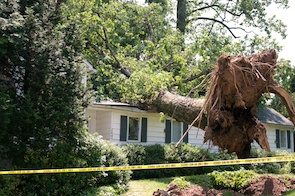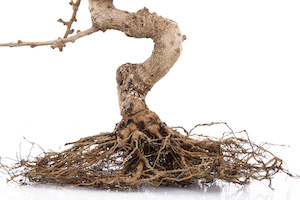4 Steps For Spotting the Difference Between Healthy Trees and Damaged Trees
Each year, tragic deaths and millions of dollars in property damage are caused by falling trees and branches. Many homeowners assume that in order to maintain the safety of their family, neighbors and friends, they must have any large, old Woodstock Georgia trees removed. However, if a tree is still healthy, this is not always the best course of action to take.
Many homeowners enjoy the beauty and shade with which all of their trees provide them. They do not want to be scared into calling in a Woodstock tree removal specialist just to put money in potentially unscrupulous company pockets and lose a valuable part of their landscape. However, the intimidating news about accidents caused by falling trees has them wanting to know when a tree really could need to be removed.
This article details how any homeowner can identify the main differences between healthy trees and those that are unhealthy or damaged. It is possible to spot these differences with little to no knowledge of trees.
Contact A Woodstock Tree Service Pro
Never be deterred from calling in a professional tree removal list or a Certified Arborist if serious doubts about a particular tree’s health arises. In fact, it is wise to have an arborist check your trees on a yearly or seasonal basis, depending on how many are on your property and depending on any serious exposure to inclement weather those trees may have had. 
Still, it is easy to spot check trees and know when they are still healthy and do not yet require a call to a professional. There are four basic things to look for when conducting your own tree inspection.
Before learning these four things, always be forewarned and forearmed. A perfectly healthy tree can be rendered unstable due to storms, ice accumulation or heavy gusts of wind. Any inspection prior to a weather event that you have done yourself to determine the good health of a tree may become essentially void if that tree has been exposed to serious weather conditions. Trees are never 100 percent stable for this reason.
If, after you have followed the steps outlined below, you experience any kind of serious weather or storms, be sure to call our local owned and operated Woodstock Tree Service Technicians conduct a thorough evaluation of the tree’s stability. You do not want to risk the tree falling on a structure such as your home, garage or a neighbor’s home.
Keeping on top of your trees’ health and stability is crucial. You can stay on top of things by following the four steps below as well as having an arborist check your trees regularly, as mentioned above.
Four Steps To Inspect A Tree’s Health
A thorough inspection includes a check of the four zones of a tree. The first zone is the overall view of the entire tree, the second is the roots and the base, the third zone is the tree’s trunk and the fourth is the canopy of the tree. This is where the branches and leaves are.
First, take a close look at the overall view of the tree. Stand back far enough that you can see it in its entirety. Is it leaning? If so, what it is leaning near? Does the lean seem to be new or do you believe that it was always present?
Next, look to see if any large branches are bare. If there are sections of the tree where there are no leaves and the tree has a significant lean, this could be an indication that the tree is sick. It could also be in the process of dying. However, a call to a certified arborist is the only way to find out for certain.
It is possible that the tree is still in good health, but that it is shedding limbs it no longer needs. Your SCS Tree Service Pro can let you know for certain. You may not need to cut the entire tree down, but you always want to act with safety in mind. You and your family may love that tree very much, but if the arborist determines that it is close to dying, it is better to invest in having it removed than experience it falling.
Be sure to repeat this process with each tree on your property. This way, you can place one call to the tree service to come and inspect any trees that you are concerned about. If no trees fail the overall appearance test, move on to an inspection of the roots, the base and the ground.
A tree is fed by and held up by its roots. There are two basic types of roots. There are anchoring roots or structural roots that support the entire tree. These are the most visible. Absorbing roots are greater in number and are not visible above ground. These provide the tree nutrients from the soil as well as water.
The tree is in serious danger if the anchoring roots decay or rot. In fact, rotted anchoring roots can lead the tree to fall at any time, even when no inclement weather is present. The tree can even appear healthy and filled with vibrant leaves, but if its structural roots are impaired, it has no strength to continue standing.
You never want to regret having taken a good look at the ground around all of your trees. A cursory look should suffice, unless the ground by the tree is covered with foliage, ivy or grass. If this is the case, pull the ground cover away gently so that you can get a closer view of the ground where the trunk of the tree meets it.
The soil surrounding the trunk and base of the tree will give away many clues as to its health. If you see any raised soil, this is an indication of root problems. The tree could be in the process of becoming uprooted. This means that it could fall at any time with virtually no provocation.
Look again to see if there are any fungi growing near the trunk. This indicates that the tree has already begun to decay because fungus or mushrooms only grows on dead wood. This is a time to call the arborist for a more in-depth evaluation. Your arborist can help you decide how to handle the situation and can provide an indication of how bad the situation is. Profusely growing mushrooms or fungi is an extremely serious problem.
Again, if your trees pass the initial ground test, you can hold off calling an arborist. You simply need to check to see if there are any dead branches near the tree. If there are any branches that have fallen to the ground, it could mean that there are more still up in the tree. This is especially true if a tree has yet to be cleaned or pruned by a tree care expert. If you do spot branches on the ground and the tree has never been pruned, call your certified arborist to evaluate things.
Your next step is to look at the base and trunk of the tree. If you see what looks like sawdust near the base, the tree is probably being attacked by insects. This substance, which is also called frass, often indicates it has been involved in an attack by small beetles. This can mean the tree is about to die. Still, there are many pests that can attack many different species of trees.
For this reason, if any of your trees gives you the suspicion that they have been invaded by insects, get your certified arborist over to inspect things thoroughly. Any pest invasion that is caught early can often be stopped and the tree’s life saved.
Inspect the trunks of the trees carefully. A cavity or hole in the trunk does not mean that the tree is dying. There are other factors to consider when it comes to tree cavities that your arborist can help explain. Before calling your arborist, inspect the trunk for any bare spots where there is either no bark or there is bark that is falling off the trunk.
Insects will often reach the trunk of the tree, leaving behind clearly visible frass. Ants leave behind coarse shavings by boring into already-decayed wood. Pine bark beetles will leave marble-sized balls of sap called pitch tubes. All of these conditions require contacting the arborist for a full evaluation and course of treatment.
In some cases, a long streak of trunk without bark means the tree has been struck by lightning. This does not mean the tree is about to die. Check the tree again in about six weeks to see if any leaves have been lost. If this is the case, call your arborist for advice.
There are occasions when a tree sprouts more than one trunk. The area where two or more trunks meet has to be inspected for any damage or signs of weakness. The trunks may split where they connect or they may grow what is known as “included” bark. This is not as strong as wood and can indicate a weakness that needs to be addressed.
An Arborist can determine if something like a cable can be installed to prevent the trunks from splitting during a storm or during high winds. For your visual check, note that a U shape at the trunk junctions usually means there is a strong connection. A V shape usually indicates one that is weak.
Your last step is to look at the canopy of the tree. Trees will shed dead branches if the branches do not get enough sun. You will note dead branches by the lack of foliage on them. A pine tree branch will hold up only brown needles if the branch has recently died.
Always check for broken branches after a strong storm occurs. You will not see the dead branches until the leaves turn brown. It may be impossible to see all the upper branches and determine if there are any dying or decayed branches. For this reason, it is very important to have your certified arborist conduct and aerial tree inspection. You will want to have any weak, broken or dead branches removed.
General Tips For Healthy Tree Care
You now know the four zones and four steps to take to check the health of your trees. When you do need a Woodstock Professional Tree Company to help you assess any issues or help you decide what to do with a dead or dying tree, always hire a certified professional. In the state of Georgia, Tree Services must have Insurance to practice their work. Ask for a copy of the Policy before you hire your chosen company. We provide our Insurance Policy right on our website.
Conduct your own tree checks on a regular basis and always do so after any serious storms. When you need to Contact Us, we will help you and your trees. Our Reputable Tree Service want trees to live long, healthy lives. They will not recommend cutting or removing a tree from your lawn unless it is an absolute necessity for the safety of your family and your trees.